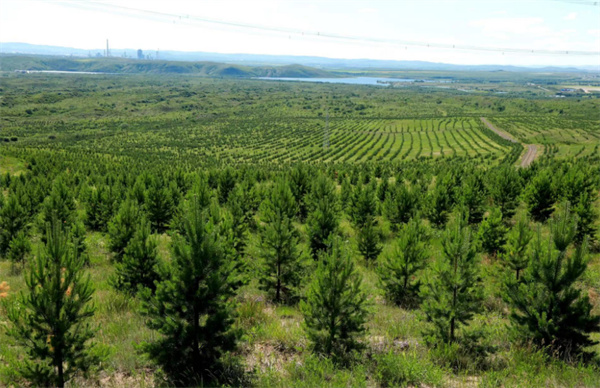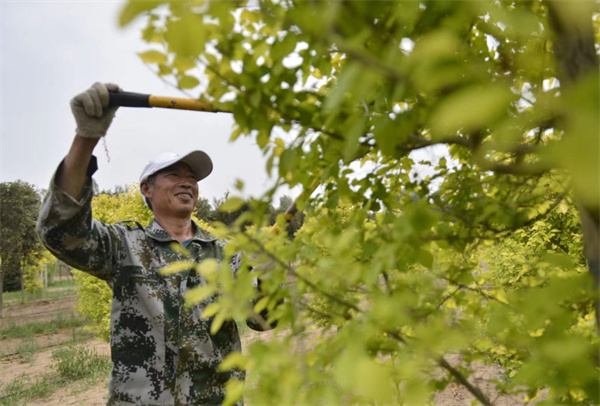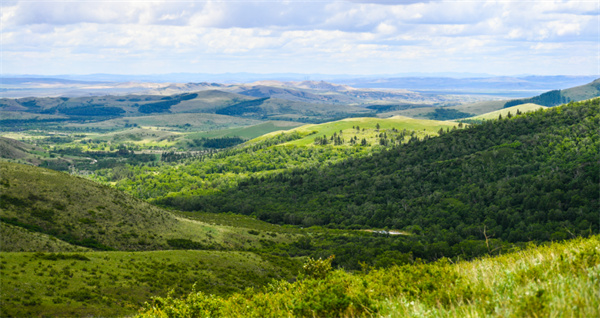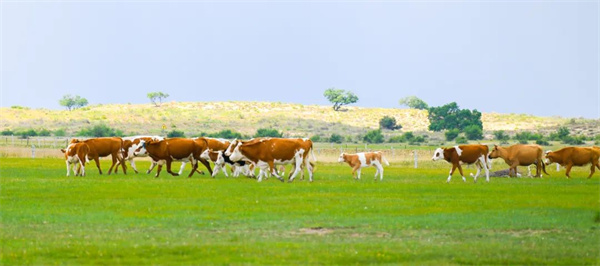China's green belief in Hunshandake sandy land

A view of the newly planted forests in Duolun county of Xilingol League. [Photo/Inner Mongolia Daily]
As one of the countries most severely affected by land desertification in the world, China has long attached great importance to ecological restoration and the management of its desert areas.
The Hunshandake sandy land in North China's Inner Mongolia autonomous region is contributing to the expansion of China's green map by greening its vast areas.
Hunshandake sandy land, one of China's four largest desert areas, is the closest desert to the capital city, Beijing. It covers a total area of 57.66 million mu (3.84 million hectares), stretching from Hexigten Banner of Chifeng city in the east to Sonid Right Banner in the Xiliin Gol League in the west, crossing the whole Xiliin Gol grassland.
In the past, the area of desertification in the sandy land expanded at a rate of 10,000 hectares per year, and the mobile sand area increased 17 times in 40 years.
Around 2000, influenced by climate change and human factors, especially the severe natural disasters caused by three consecutive years of drought and other calamities from the late 1990s to the early 2000s, the already fragile ecological environment underwent a rapid deterioration. Frequent floating dust, sandstorms, and dust storms directly threatened the ecological security of the Beijing-Tianjin region.

A man cuts down branches at a forest farm in Duolun county. [Photo/Inner Mongolia Daily]

Lush forests form in Hunshandake sandy land due to years of green efforts. [Photo/Inner Mongolia Daily]
According to remote sensing data from the Inner Mongolia Meteorological Bureau in 2003, the severely damaged area (mobile sand area) in the sandy land was about 42.1 million mu.
The country has initiated a series of ecological protection and construction projects, such as returning grazing lands to natural vegetation, and returning farmland back to forests and grasslands.
In so doing, Xiliin Gol League has successively formulated the "Implementation Plan for Solidifying the Ecological Security Barrier of the Northern Motherland", and "The 14th Five-Year Plan and 2035 Vision Target Outline for National Economic and Social Development in Xiliin Gol League," among other projects and plans.
Since 2000, Xilingol League has completed 23.3 million mu of forest and grassland ecological restoration tasks in the sandy land.
To date, the forestry restoration covers 14.1 million mu, and grassland restoration covers 9.2 million mu. The forest coverage rate has reached 23.35 percent, an increase of 10.3 percentage points from 2000. The average vegetation coverage of grassland has reached 41 percent, up eight percentage points from 2000.
A 420-kilometer-long ecological protection system that measures from 1-10 kilometers in width has basically formed on the southern edge of the sandy land, and a solid ecological protection system spanning five banners and counties has preliminarily taken shape, curbing the further expansion of the sandy land.

Cattle graze in the hinterland of Hunshandake sandy land. [Photo/Inner Mongolia Daily]



 Print
Print Mail
Mail


